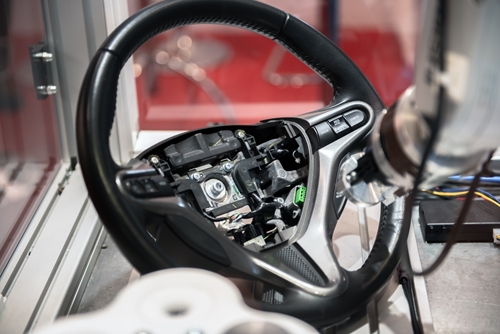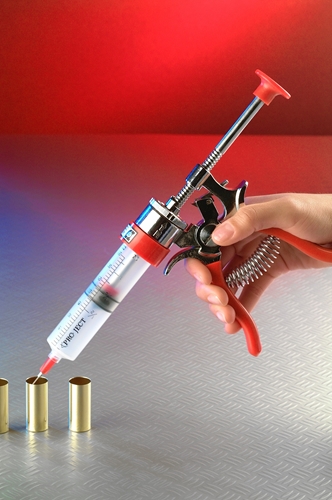

- Contributions by industrial experts with engineers in mind
- Focused on specialty-chemical material applications and selection
Knowledge Center
Adhesives and Coatings used for EMI/RFI Shielding

EMI Shielding Adhesives and Coatings
Electromagnetic Interference (EMI), referred to as Radio Frequency Interference (RFI) when in the RF range, is everywhere in our modern world. EMI can be generated by almost any electronic device and is propagated through transmission lines as well as radiated from the source. The most common major sources are power lines, automobile ignitions, switching power supplies and microprocessors. EMI can negatively impact electronic device operation and interfere with transmission like radio, so devices are often shielded. This shielding takes many forms and is used both to protect devices from EMI and to mitigate EMI transmission outside of the device in accordance with FCC and other regulations. One effective and versatile way to shield devices is with electrically conductive adhesives (ECAs) or other filled resins.
What are electrically conductive adhesives?
Electrically conductive adhesives and coatings are resins that have been filled with electrically conductive particles enough to overcome their resistance to carrying current. Epoxies are the most frequently used, but silicone and other formulations are also available. They can be filled with any number of conductive particles including metallics like silver and iron, as well as carbon and graphite. These non-metallic fillers are generally less conductive per volume, but can be used effectively for shielding, especially if a magnetic filler would be an issue. These resins can be suited to particular applications and are chosen to suit needs like high or low temperature, ease of rework and expected chemical or moisture exposure.
"EMIs can be used directly as coatings or encapsulants, providing a low-profile way to shield sensitive electronics. "
How do electrically conductive adhesives work?
Electromagnetic radiation is essentially an electrical and magnetic field travelling together, propagating out through air or other carriers like cables. When this field meets an EMI shield, the shield reflects and absorbs the interference, as a current is induced in the conductor. EMI shield can act as a faraday cage, even if they are not made entirely of conductive material, as with ECAs. The faraday cage directs current around, rather than through it, keeping external EM radiation out, and internal EM radiation in. A completely sealed metal box would be an ideal EMI shield, but practically this isn't possible for all applications. As long as any gap or void in the shield is smaller than the wavelength of the EM energy it will contain it.
How are electrically conductive adhesives used?
Electrically conductive adhesives are being used in a variety of EMI shielding applications. They can be used directly as coatings or encapsulants, providing a low-profile way to shield sensitive electronics. These can be dispensed in spray form, as well as brushed or dipped. They can also be used (along with shielding tapes) to seal seams in other EMI shields. Because shielding is much less effective or totally ineffective when it doesn't completely surround the area, care must be taken to be free of voids or gaps. ECAs can provide a dual duty in these applications by providing structural bonding in addition to shielding. Shielding adhesives are also used frequently in handheld devices like cellphones and tablets, as well as laptop and desktop computers.






